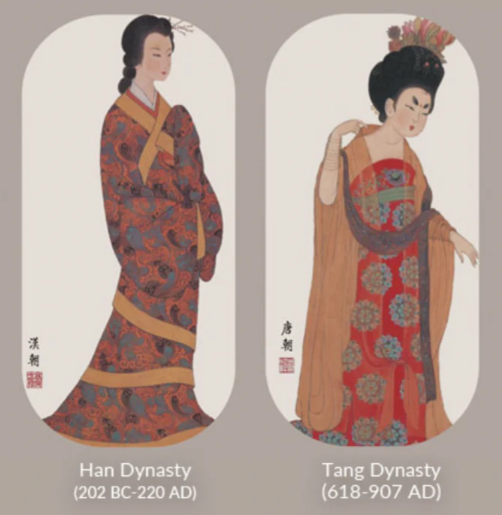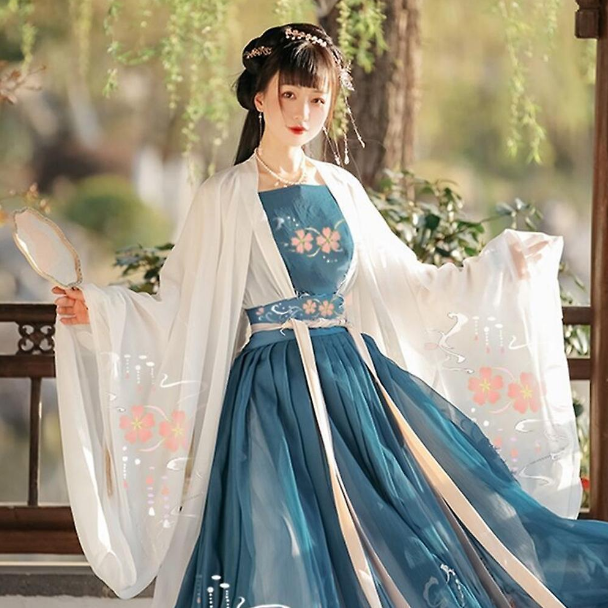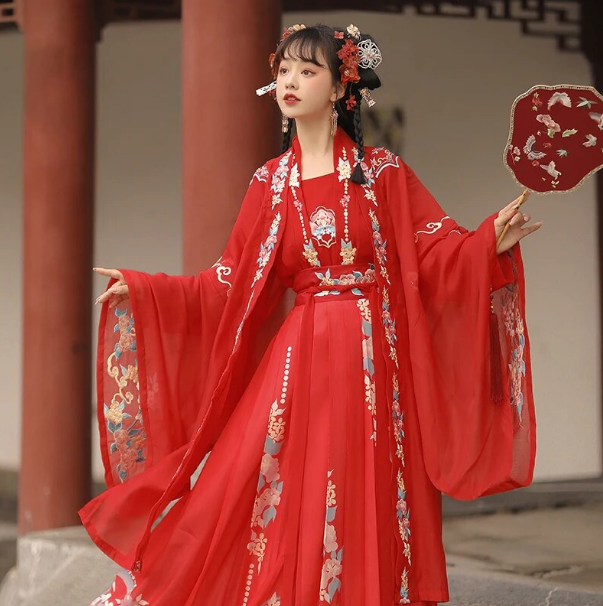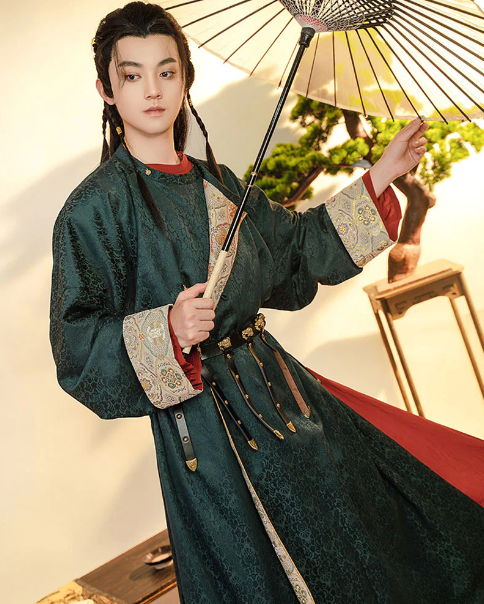Introduction
In this discussion, we will delve into the historical significance of the Tang and Han dynasties and explore the relevance of comparing their costumes.
Historical Significance of Tang and Han Dynasties
Tang Dynasty
The Tang Dynasty, which thrived from 618 to 907 AD, was a pinnacle of Chinese civilization, known for its cultural, political, and economic achievements. It spanned over three centuries, characterized by advancements in art, poetry, and science.

Han Dynasty
The Han Dynasty, lasting from 206 BC to 220 AD, marked a period of significant stability and growth in China. It laid the foundation for many aspects of Chinese culture, including language, government, and the silk road trade.
Relevance of Costume Comparison
Cultural Evolution
Understanding the differences and similarities between Tang and Han costumes provides insights into the cultural evolution over time. It reflects changes in taste, aesthetics, and societal norms.
Fashion’s Enduring Legacy
By comparing these two distinct dynastic fashion styles, we can uncover the enduring legacy of these costumes in contemporary fashion. Elements of both the Tang and Han costumes continue to influence modern clothing design.
Let’s continue to explore the details of Han and Tang costumes, their unique characteristics, and how they contribute to our understanding of these dynastic eras.
Han Costume
Historical Background of Han Dynasty
The Han Dynasty (206 BC – 220 AD) was a pivotal period in Chinese history. It witnessed the unification of China and marked a time of significant cultural and technological advancements.
Political Stability
The Han Dynasty brought about political stability, allowing for the flourishing of arts and fashion.
Silk Road Trade
The Han Dynasty played a vital role in the Silk Road trade network, which facilitated the exchange of silk, spices, and other goods.
Influence on Fashion
Han fashion had a profound influence on subsequent dynasties and continues to impact Chinese attire today.
Key Elements of Han Costume
Fabrics and Materials
Han clothing was primarily made from silk, a luxury material synonymous with Chinese culture.
Styles and Silhouettes
Han costumes featured loose-fitting robes with wide sleeves, symbolizing elegance and comfort.
Colors and Symbols
Colors like yellow and red represented wealth and prosperity, while symbols such as dragons and phoenixes held cultural significance.
Accessories
Accessories like jade ornaments, hairpins, and embroidered shoes were integral to Han fashion.
Social Hierarchy
Costumes varied based on social status, with emperors and officials wearing distinct attire.
Legacy
The Han Dynasty’s fashion legacy endures in modern Chinese clothing, bridging ancient traditions with contemporary design.
Tang Costume
Historical Background of Tang Dynasty
The Tang Dynasty (618 – 907 AD) was a vibrant and culturally rich era in Chinese history.
Cultural Flourishing
The Tang Dynasty was marked by a flourishing of art, music, and fashion, reflecting a cosmopolitan and open society.
Silk Road Prosperity
Tang China was a hub of the Silk Road trade, facilitating exchanges of silk, spices, and other goods with distant civilizations.
Influences from Abroad
Tang fashion was influenced by foreign cultures, including Central Asian and Persian styles.

Key Elements of Tang Costume
Fabrics and Materials
Tang costumes were made from luxurious silk, often embellished with intricate embroidery.
Styles and Silhouettes
Tang clothing featured wide, flowing sleeves and loose, layered garments, providing comfort and elegance.
Colors and Decorations
Vibrant colors like red, green, and blue were popular, and clothing was adorned with symbols like peonies and dragons.
Accessories
Tang fashion included elaborate headdresses, jewelry, and ornate belts, reflecting opulence and social status.
Social Distinction
Distinctive clothing marked social hierarchies, with the emperor and nobility wearing the most lavish attire.
Legacy
The Tang Dynasty’s fashion legacy endures, influencing modern Chinese fashion with its opulent aesthetics and fusion of foreign elements.
Comparison of Tang and Han Costumes
Fabrics and Materials
Tang Dynasty
Tang costumes predominantly utilized silk, a highly prized material renowned for its softness and lustrous sheen. This luxurious fabric showcased the wealth and sophistication of the era. Tang silk production reached its zenith, contributing to the prosperity of the Silk Road trade. Learn more about silk
Han Dynasty
In contrast, Han attire primarily featured silk as well, but it was more reserved for the elite due to its cost. Commoners often wore garments made from hemp or cotton, which were less expensive alternatives. This reflects the socio-economic disparities of the time. Learn more about Han Dynasty textiles

Styles and Silhouettes
Tang Dynasty
Tang clothing was characterized by loose, flowing designs that emphasized comfort and freedom of movement. Wide sleeves and layered garments were popular, reflecting the Tang Dynasty’s cosmopolitan influences and open-mindedness to foreign fashion. Explore Tang Dynasty fashion
Han Dynasty
Han attire featured a more structured and conservative design. The clothing consisted of robes with narrower sleeves and a fitted, wrap-around style. This design choice was practical for the climate and showcased the traditional aesthetics of the Han Dynasty. Learn more about Han Dynasty clothing
By examining these differences in fabrics, materials, styles, and silhouettes, we can gain valuable insights into the evolving fashion sensibilities of these two remarkable dynasties.
Cultural Significance and Symbolism
Social Status and Rank
Tang Dynasty
In Tang Dynasty society, clothing played a pivotal role in conveying social status and rank. The emperor’s attire was the most extravagant, adorned with intricate designs and precious materials, emphasizing imperial authority. Officials and nobility also wore opulent clothing, which reflected their positions within the hierarchy. Commoners, on the other hand, donned simpler and more practical attire. These distinctions in dress were a visual representation of the social structure. Learn more about Tang Dynasty social hierarchy
Han Dynasty
Similarly, in the Han Dynasty, clothing served as a marker of social distinction. The emperor’s robes were distinguished by their dragon motifs, symbolizing imperial power. Officials and scholars wore distinctive hats and robes that denoted their positions. The color of clothing was also regulated, with strict rules governing who could wear certain colors. This hierarchy in attire emphasized social order and hierarchy. Explore Han Dynasty social class
Influence on Modern Fashion
Tang Dynasty
The influence of Tang fashion can be observed in modern Chinese clothing design. Elements like the loose, flowing silhouettes and the use of vibrant colors continue to inspire contemporary fashion designers in China and around the world. Tang-style dresses and accessories are still worn in traditional and cultural ceremonies today. The fusion of Eastern and Western fashion elements is a testament to the enduring appeal of Tang Dynasty attire. Read about the Tang Dynasty’s impact on modern fashion

Han Dynasty
The legacy of Han fashion is also palpable in modern Chinese fashion. Hanfu, the traditional clothing of the Han Dynasty, has experienced a resurgence in popularity in recent years, with people donning it for cultural events, festivals, and even weddings. This revival showcases the timeless and elegant designs of Han clothing. Additionally, the influence of Han aesthetics can be seen in contemporary fashion trends, such as the use of silk and traditional Chinese motifs. Learn about the revival of Hanfu
The enduring cultural significance and symbolism of Tang and Han costumes continue to shape the way we perceive fashion, identity, and heritage today.
Conclusion
Similarities and Differences
Tang and Han costumes, while both being emblematic of their respective dynasties, exhibit notable similarities and differences.
Commonalities
- Silk Usage: Both dynasties prized silk as the primary fabric for clothing, emphasizing its luxuriousness and cultural significance.
- Symbolism: In both Tang and Han costumes, colors and symbols played vital roles in conveying meaning and social hierarchy.
- Social Significance: Clothing in both dynasties was a marker of social status and rank, reflecting the hierarchical structure of their societies.
Differences
- Styles: Tang clothing was characterized by loose, flowing silhouettes, while Han attire featured a more structured and fitted design.
- Influences: Tang fashion drew inspiration from foreign cultures and featured cosmopolitan influences, whereas Han clothing adhered more closely to traditional Chinese aesthetics.
- Accessories: The Tang Dynasty favored ornate headdresses and jewelry, while the Han Dynasty had distinctive headwear and accessories.
Legacy of Tang and Han Costumes
The legacy of Tang and Han costumes extends beyond their respective dynasties, leaving a lasting impact on fashion and culture.
Contemporary Fashion
- Tang Dynasty fashion elements continue to inspire contemporary Chinese fashion, with designers incorporating loose silhouettes and vibrant colors into modern clothing.
- The revival of Hanfu, the traditional clothing of the Han Dynasty, showcases the enduring appeal of Han aesthetics in today’s fashion scene.

Cultural Identity
- Tang and Han costumes remain integral to Chinese cultural identity, often worn during traditional festivals and ceremonies.
- These attire choices reinforce a sense of heritage and pride, connecting modern Chinese people to their historical roots.
Global Influence
- Both Tang and Han fashion have gained recognition worldwide, contributing to the global appreciation of Chinese culture and history.
- International designers frequently incorporate elements from these dynastic styles into their collections, showcasing their universal appeal.
In conclusion, the study of Tang and Han costumes not only sheds light on the fashion sensibilities of these ancient dynasties but also underscores their enduring cultural significance and influence on contemporary fashion and identity.







